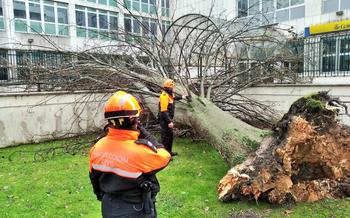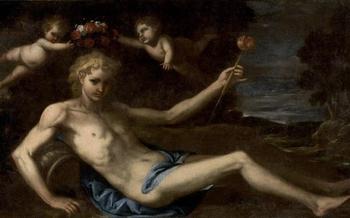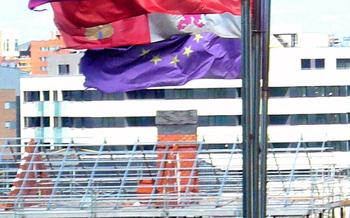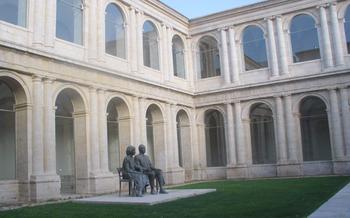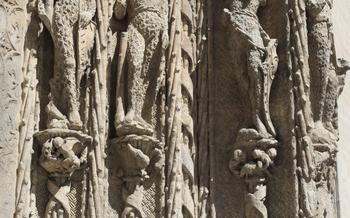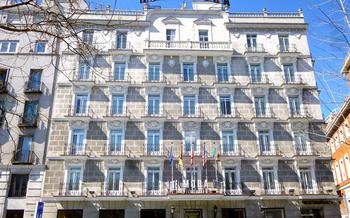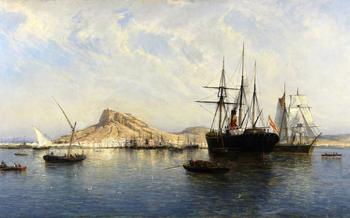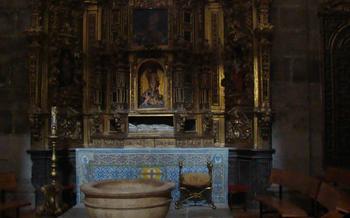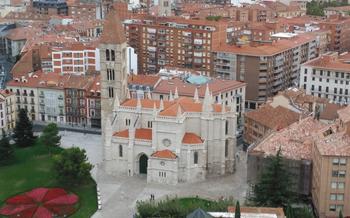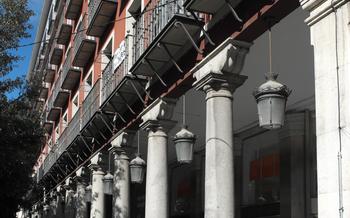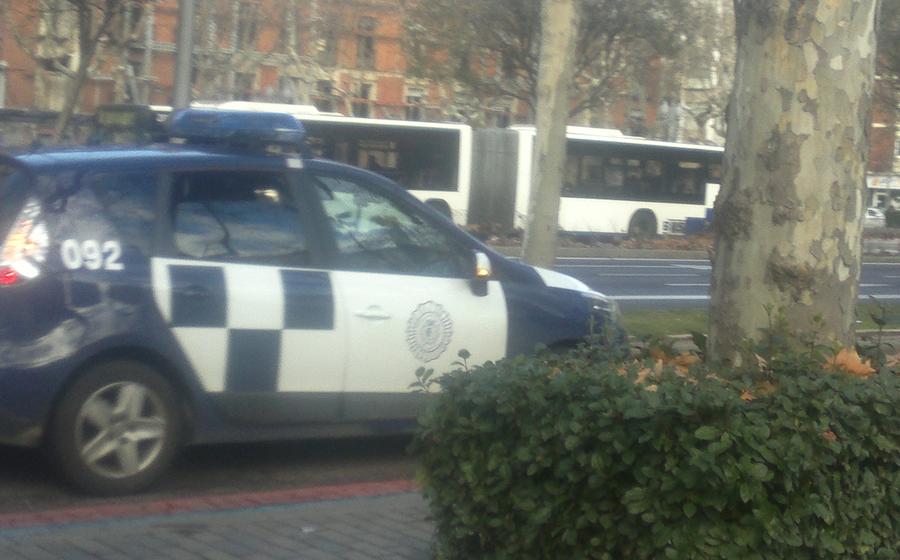
Sala de Exposiciones San Benito
- Sala de Exposiciones San Benito
- Hours of Operation and Admission Fees
- Permanent Collection and Featured Exhibitions
- Masterpieces and Must-See Works
- Thematic Tours and Educational Programs
- Interactive or Multimedia Displays
- Accessibility for Visitors with Disabilities
- Souvenir Shop and Museum Publications
- Café or Restaurant Facilities
- Photography and Videography Policies
- Events, Workshops, and Special Programs
- Combining Your Visit with Other Attractions
- Local Cuisine and Dining Options
- Insider Tip
Sala de Exposiciones San Benito
Historical Background
In the heart of Valladolid, Spain, stands the Sala de Exposiciones San Benito, a former convent that has been transformed into a vibrant space dedicated to contemporary art and cultural exhibitions. Built in the 16th century, the building initially served as a monastery for the Benedictine order, a religious community known for their commitment to education and spirituality. Over the centuries, the convent underwent several renovations and additions, reflecting the changing needs and tastes of its inhabitants. In the 19th century, the complex was secularized and repurposed for various uses, including a military hospital and a school, before finally being designated as an exhibition hall in 199Today, the Sala de Exposiciones San Benito stands as a testament to the rich history of Valladolid and its commitment to preserving and showcasing contemporary artistic expressions.
Hours of Operation and Admission Fees
The Sala de Exposiciones San Benito follows regular hours of operation, typically from Tuesday to Sunday, with specific closures on Mondays and certain holidays. It opens its doors from 11:00 AM to 2:00 PM and resumes operations in the afternoon from 5:00 PM to 8:00 PM. Visitors should note that these hours may vary during special events or holidays, so it is advisable to check the museum's official website or contact them directly for the most up-to-date information.
Admission to the Sala de Exposiciones San Benito is generally free of charge, allowing visitors to enjoy the diverse artworks and exhibitions without any financial barriers. This free admission policy aims to make art and culture accessible to everyone, encouraging a broader audience to engage with the museum's offerings.
Permanent Collection and Featured Exhibitions
The Sala de Exposiciones San Benito houses a diverse collection of artworks, ranging from painting and sculpture to photography and contemporary installations. The permanent collection features masterpieces from renowned Spanish artists such as Francisco Goya, Pablo Picasso, and Salvador Dalí, showcasing the evolution of Spanish art from the 19th century to the present day.
Temporary exhibitions, which change regularly, present a variety of contemporary and modern art from both established and emerging artists. The museum has a special focus on promoting local and regional artists, providing them with a platform to showcase their works and engage with the community. The thematic focus of the exhibitions varies, often exploring specific artistic styles, historical periods, or social and cultural issues.
Masterpieces and Must-See Works
Among the must-see works of the permanent collection at the Sala de Exposiciones San Benito is "The Embrace" by the renowned Spanish sculptor, Eduardo Chillida. This poignant bronze sculpture, created in 1954, depicts two figures locked in a tender embrace, symbolizing the profound connection and unity between human beings. The intricate interplay of the two figures, their bodies intertwined in a rhythmic dance, evokes a sense of love, compassion, and shared vulnerability.
Another notable masterpiece is "The Yellow Dress" by the Spanish painter, Joaquín Sorolla. This vibrant oil painting, completed in 1903, portrays a young woman adorned in a bright yellow dress, standing against a backdrop of lush greenery. Sorolla's masterful use of light and color captures the ephemeral beauty of the fleeting moment, as the woman's vibrant dress contrasts with the soft, muted tones of the surrounding landscape.
Visitors are also drawn to "The Family" by the Spanish artist, Ignacio Zuloaga. This captivating painting, created in 1920, depicts a humble family gathered around a table, engaged in a simple yet poignant domestic scene. Zuloaga's keen observation of human interactions and his ability to capture the essence of everyday life make this work a powerful portrayal of family bonds and the enduring human spirit.
Thematic Tours and Educational Programs
Guided Tours and Their Frequency: The Sala de Exposiciones San Benito offers guided tours led by knowledgeable museum docents. These tours provide visitors with in-depth insights into the museum's collection, the history of the building, and the artistic techniques and styles represented. Guided tours are conducted regularly, typically daily or several times a week, depending on the season and demand.
Specialized Tours for Schools and Groups: In addition to regular guided tours, the museum offers specialized tours tailored to specific groups, such as school children, university students, or groups with particular interests. These tours can be customized to focus on specific themes, artworks, or historical periods, allowing for a more personalized and engaging experience. Advance booking is recommended for groups to ensure availability.
Workshops, Lectures, and Educational Programs: The Sala de Exposiciones San Benito is committed to promoting art education and appreciation. It regularly organizes workshops, lectures, and educational programs for visitors of all ages. These programs may include hands-on art workshops, lectures by experts on art history or specific exhibitions, and educational activities designed for families and children. Check the museum's website or inquire at the information desk for upcoming events and registration details.
Interactive or Multimedia Displays
The Sala de Exposiciones San Benito embraces the convergence of art and technology by incorporating interactive and multimedia displays into its exhibition spaces. These engaging installations enhance the visitor experience, providing immersive and multisensory interactions that bring the artworks to life.
One notable exhibit is a virtual reality experience that transports visitors to the historical context of the building, allowing them to explore the city of Valladolid as it existed centuries ago. Through this immersive journey, visitors gain a deeper understanding of the Sala de Exposiciones San Benito's significance and its role in shaping the city's cultural heritage.
Another interactive display features a digital touch screen that enables visitors to explore the museum's collection in greater detail. With a few simple taps, visitors can access information about the artists, their techniques, and the stories behind the artworks. This interactive element fosters a sense of engagement and encourages visitors to delve deeper into the artistic treasures on display.
The Sala de Exposiciones San Benito's commitment to innovation extends to its educational offerings as well. Visitors can participate in interactive workshops that delve into the artistic processes and techniques showcased in the exhibitions. These workshops provide hands-on experiences, allowing visitors to experiment with different art forms and gain a newfound appreciation for the creative process.
Through these interactive and multimedia displays, the Sala de Exposiciones San Benito transforms the traditional museum experience into a dynamic and engaging journey that captivates visitors of all ages. These innovative elements not only enhance the understanding and enjoyment of the artworks but also foster a lasting connection between visitors and the cultural heritage of Valladolid.
Accessibility for Visitors with Disabilities
The Sala de Exposiciones San Benito is committed to providing an accessible and inclusive environment for all visitors, regardless of their abilities. The museum features various accessibility features to ensure that everyone can fully enjoy and appreciate the artistic treasures within.
Wheelchair users and visitors with mobility impairments will find ramps and elevators strategically placed throughout the museum, allowing them to navigate the different exhibition spaces effortlessly. Designated parking spaces are also available for visitors with disabilities, located conveniently close to the museum entrance.
For visitors with visual impairments, the museum offers audio guides that provide detailed descriptions of the artworks and exhibitions. These guides can be rented at the information desk, and staff members are always ready to assist with any additional needs or requests.
The museum also welcomes assistance dogs, providing a warm and supportive environment for visitors who rely on their furry companions. The staff is well-trained to interact with assistance dogs and ensure that they feel comfortable and respected during their visit.
With these thoughtful accessibility features, the Sala de Exposiciones San Benito strives to create a welcoming and inclusive space where everyone can engage with and appreciate the beauty of art, regardless of their abilities.
Souvenir Shop and Museum Publications
The Sala de Exposiciones San Benito houses a well-stocked souvenir shop where visitors can purchase a variety of mementos and keepsakes to remember their visit. The shop offers a diverse selection of items, including postcards, magnets, keychains, and replicas of artworks. For those seeking more in-depth knowledge, the museum also provides a range of publications, such as catalogs, guidebooks, and monographs on the artists and exhibitions featured in the collection. These publications offer a deeper dive into the museum's holdings and provide valuable insights into the artistic and historical significance of the artworks.
Café or Restaurant Facilities
While the Sala de Exposiciones San Benito does not have its own dedicated café or restaurant, visitors can find a variety of dining options within easy walking distance of the museum. The surrounding streets are lined with charming cafés, traditional Spanish restaurants, and modern tapas bars, offering a diverse range of cuisines and atmospheres to suit every taste and budget.
For a quick bite or a refreshing drink, visitors can stop by one of the many cafés located just steps away from the museum. These cafés offer a variety of coffee, tea, pastries, and light snacks, perfect for a break in between exploring the museum's exhibitions.
For a more substantial meal, visitors can head to one of the nearby restaurants, which serve a variety of traditional Spanish dishes, including tapas, paella, and grilled meats. The restaurants in this area are known for their authentic cuisine, using fresh, local ingredients to create delicious and memorable dishes.
It is important to note that while the museum itself does not have any dining facilities, visitors are welcome to bring their own food and drinks to enjoy in the museum's courtyard or the nearby Plaza Mayor. This can be a great way to save money and enjoy a picnic-style lunch while taking in the sights and sounds of the city.
Photography and Videography Policies
Photography and videography are generally allowed within the Sala de Exposiciones San Benito, providing an excellent opportunity for visitors to capture their favorite artworks and share their museum experience with others. However, there are certain restrictions in place to ensure the preservation and protection of the artworks.
Flash photography is strictly prohibited, as the intense light emitted from camera flashes can damage the delicate pigments and materials used in the paintings and sculptures. Visitors are also asked to refrain from using tripods or any other equipment that might obstruct the view of other visitors or interfere with the museum's operations.
While taking photographs and videos is permitted, visitors are expected to be respectful of the artworks and other visitors. Using the museum's images or videos for commercial purposes or sharing them online without proper attribution is prohibited.
Overall, the Sala de Exposiciones San Benito encourages visitors to capture and share their experiences, while ensuring the preservation of the artworks and the enjoyment of all visitors.
Events, Workshops, and Special Programs
In addition to its permanent collection and temporary exhibitions, the Sala de Exposiciones San Benito regularly hosts a variety of events, workshops, and special programs throughout the year. These events are designed to engage visitors of all ages and interests, and offer a deeper dive into the museum's collection and the world of art.
Workshops and lectures by renowned artists, art historians, and curators are frequently organized, providing visitors with an opportunity to learn from experts in the field. These events often focus on specific artistic techniques, historical periods, or contemporary art movements, offering a unique perspective on the works on display.
The museum also hosts educational programs tailored for schools and specific groups, such as seniors or families with young children. These programs are designed to make art accessible and enjoyable for everyone, and may include guided tours, hands-on activities, and interactive workshops.
To stay up-to-date on upcoming events and special programs, visitors are encouraged to check the museum's website or social media pages. Advance registration is recommended for some events, especially those with limited capacity.
Combining Your Visit with Other Attractions
A visit to the Sala de Exposiciones San Benito can be easily combined with other cultural and historical attractions in Valladolid. Just a short walk away, you'll find the Museo Nacional de Escultura, which houses a stunning collection of religious sculptures from the Middle Ages to the Baroque period. Another must-see is the Catedral de Valladolid, a magnificent Gothic cathedral that dominates the city skyline. For a glimpse into the city's rich history, visit the Museo de Valladolid, which showcases artifacts and exhibits tracing the city's development from its Roman origins to the present day.
To make the most of your time in Valladolid, consider creating an itinerary that allows you to explore multiple attractions in one day. For example, you could start your morning with a visit to the Sala de Exposiciones San Benito, followed by lunch at one of the many traditional tapas bars in the city center. In the afternoon, you could visit the Museo Nacional de Escultura and the Catedral de Valladolid before ending your day with a stroll along the scenic banks of the Río Pisuerga.
No matter how you choose to spend your time in Valladolid, be sure to include a visit to the Sala de Exposiciones San Benito. This hidden gem offers a unique perspective on the city's rich artistic and cultural heritage.
Local Cuisine and Dining Options
Valladolid is renowned for its culinary delights, offering a diverse range of dishes that showcase the region's rich flavors and traditions. To fully immerse yourself in the local experience, venture beyond the museum and explore the city's vibrant culinary scene.
Start your culinary journey by indulging in the city's signature dish, the lechazo asado, a mouthwatering roast suckling lamb that's cooked to perfection in a wood-fired oven. This tender and flavorful dish is sure to tantalize your taste buds and leave you craving for more.
For a more casual dining experience, explore the city's numerous tapas bars, where you can sample a variety of small plates accompanied by a glass of local wine. From classic tapas like patatas bravas and croquetas to more innovative creations, there's something to satisfy every palate.
If you're looking for a unique and authentic dining experience, head to one of Valladolid's traditional mesones. These charming establishments often feature live music and offer a rustic ambiance that transports you back in time. Indulge in hearty stews, grilled meats, and homemade desserts while soaking up the lively atmosphere.
For those on a budget, there are plenty of affordable dining options available. Look for menús del día, which offer a fixed-price lunch menu that typically includes a starter, main course, dessert, and a drink. You can also find budget-friendly tapas bars that offer great value for money.
No matter your budget or preferences, Valladolid's culinary scene has something to offer everyone. Embrace the local flavors and indulge in a gastronomic adventure that will leave you with lasting memories.
Insider Tip
-
A hidden gem within the museum is the small chapel located on the second floor. It features stunning stained glass windows and intricate carvings, offering a serene and spiritual ambiance.
-
To fully appreciate the museum's collection, plan your visit for a weekday morning. During this time, you can avoid the crowds and have a more intimate experience with the artworks.
-
Keep an eye out for special events and activities hosted by the museum throughout the year. These events often include guided tours, workshops, lectures, and performances, providing a unique and immersive way to engage with the collection.
